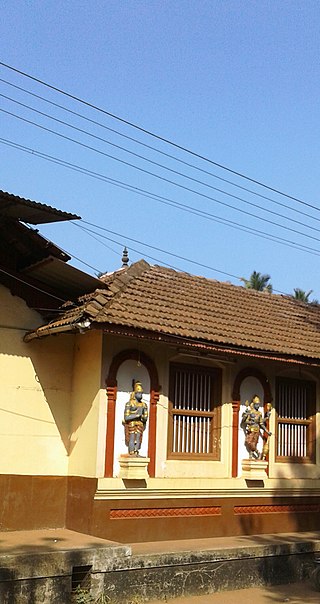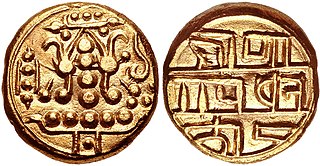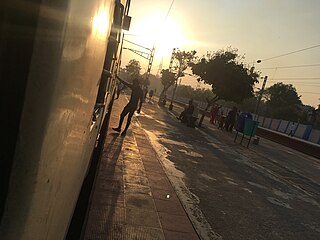
Dakshina Kannada district is located in the state of Karnataka in India, with its headquarters in the coastal city of Mangalore. The district covers an area nestled in between the Western Ghats to its east and the Arabian Sea to its west. Dakshina Kannada receives abundant rainfall during the Indian monsoon. It is bordered by Udupi district to the north, Chikmagalur district to the northeast, Hassan district to the east, Kodagu to the southeast and Kasaragod district of Kerala to the south. According to the 2011 census of India, Dakshina Kannada district had a population of 2,083,625. It is the only district in Karnataka state to have all modes of transport like road, rail, water and air due to the presence of a major hub, Mangalore. This financial district is also known as the Cradle of Indian banking.

Karighatta is a hill situated a few kilometres outside the 'island' town of Srirangapatna. It is situated off the Bangalore-Mysore Highway just before Srirangapatna in Karnataka state of India.

Bantwal is a suburb of Mangalore in Dakshina Kannada district, Karnataka, India, and the headquarters of Bantwal taluk. It is located 25 km (16 mi) East of Mangalore city center. BC Road-Kaikamba of Bantwal is one of the fastest developing areas in Dakshina Kannada district of Karnataka.

Nellitheertha Cave Temple in Nellitheertha, Karnataka, India is dedicated to the Indian deity Sri Somanatheshwara, or Shiva. The temple dates back to at least 1487 CE.
The Vrishabhavathi River is a minor river, a tributary of the Arkavathy, that flows through the south of the Indian city of Bangalore. The river was once so pristine that the water from it was used for drinking and used by the famous Gali Anjaneya temple but is now highly polluted due to pollutants from industrial, agricultural and domestic sources.

Nimishamba is the name of a temple on the banks of the Cauvery river, located about 2 km from Srirangapattana on the road leading to Sangam (confluence) in the south Indian state of Karnataka.

Polali is a village in Bantwal taluk, in the Dakshina Kannada district of Karnataka state in India. Polali is known for the Rajarajeshwari Temple. Raja Rajeshwari is an icon of Shakti. Polali Shri Raja Rajeshwari temple hosts a month-long annual jaatra held in the month of March and April. The temple is thronged by devotees during this time. A fair is also held in the premises of the temple.

The Alupa dynasty was an Indian dynasty that ruled from 200 to 1444 A.D. in Southern India. The kingdom they ruled was known as Alvakheda Arusasira and its territory spanned the coastal districts of the modern Indian state known as Karnataka.
Bangalore (Bengaluru), the capital of Karnataka state, India, reflects its multireligious and cosmopolitan character by its more than 1000 temples, 400 mosques, 100 churches, 40 Jain derasars, three Sikh gurdwaras, two Buddhist viharas and one Parsi fire temple located in an area of 741 km2 of the metropolis. The religious places are further represented to include the few members of the Jewish community who are making their presence known through the Chabad that they propose to establish in Bangalore and the fairly large number of the Baháʼí Faith whose presence is registered with a society called the Baháʼí Centre. In the demographically diverse, major economic hub and India's fastest-growing major metropolis of Bangalore, the number of religious places of each religion reported reflects growth in proportion to the population growth. According to the 2001 census of India, 79.37% of Bangalore's population is Hindu, roughly the same as the national average. Muslims comprise 13.37% of the population, which again is roughly the same as the national average, while Christians and Jains account for 5.79% and 1.05% of the population, respectively, double that of their national averages. Anglo-Indians also form a substantial group within the city.

Kaggalipura is a village along Kanakapura Road on the outskirts of Bangalore, in the southern state of Karnataka, India. Kaggalipura is located on the Bangalore-Coimbatore National Highway 948, around 20 km south of Bangalore. The village is named after the Kaggali tree, which grows in abundance locally. The village was established after clearing several Kaggali trees from the area, hence the name Kaggalipura.

Polali Rajarajeshwari Temple is a temple located in Polali, Dakshina Kannada district in Karnataka. The primary deity of the temple is Shri Rajarajeshwari. The temple was constructed in the 8th century AD by King Suratha and has been developed by many dynasties which ruled over the region. The idol of Sri Rajarajeshwari, another name/form of the divine Goddess Sri Lalita Tripurasundari, is completely moulded from clay with special medicinal properties. The temple portrays Hindu architecture with roofs adorned with wooden carvings of gods and copper plates. Daily and special poojas are conducted in the temple under the auspices of the head priests K Rama Bhat, Madhava Bhat, Parameshwara Bhat and Narayan Bhat .Annual festivals are held in the temple with much fanfare. Polali Chendu festival is an important festive event where football is played to represent the fight of good over evil. The Chendu festival is followed by the annual festival in March, which lasts for a month and is attended by people from all over the world.Tipu Sultan was an admirer of Polali Chendu and had a platform built for him to watch the game. It is called Sultan Katte even to this day.

Rajarajeshwari Nagar, officially Rajarajeshwari Nagara is a western suburb of Bangalore, Karnataka, India. It is located in the southwestern part of Bangalore along the Mysore Road, with Nagarbhavi and the Bangalore University to the north and north-west, Hosakerehalli to the east and Kengeri to the south-west. There is a prominent arch-shaped structure on Mysore Road which serves as the most popular entrance to this locality.

Nayandahalli railway station is an Indian Railways Train station located in Nayandahalli, Bangalore in the Indian state of Karnataka and is located about 10 km away from the Bangalore City railway station. This station serves the Rajarajeshwari Nagar, Baapuji Nagara, Deepanjalinagara, and Vijayanagara areas of Bangalore city. It is located on Mysore–Bangalore line
Raja Rajeshwari Nagar may refer to these places in India:

Munirathna Naidu, known mononymously as Munirathna is an Indian film producer-turned-politician from Karnataka who served as the Minister of Horticulture and Planning, Programme Monitoring & Statistics of Karnataka from 4 August 2021. Member of the BJP, he was elected as a member of the Legislative Assembly of Karnataka from Rajarajeshwari Nagar in the years 2013, 2018, 2020, and 2024.

Rajarajeshwari Nagar Assembly constituency, also known as RR Nagar, is one of the 224 constituencies in the Karnataka Legislative Assembly of the State of Karnataka, India. It is located within the Bangalore Rural Lok Sabha constituency.

Rajarajeshwari Nagar is an elevated metro station on the East-West corridor of the Purple Line of Namma Metro serving the residential locality of Rajarajeshwari Nagar which was named after Jnanalakshi Rajarajeshwari temple located in Rajarajeshwari Nagar in Bangalore, India. To the north is the Bangalore University and to the south is the suburb city of Kengeri along with Kengeri Metro Station. This was inaugurated on 29 August 2021 and was commenced to the public on 30 August 2021.

Kengeri is an elevated metro station on the East-West corridor of the Purple Line of Namma Metro serving the suburbs of Kengeri bordered by Nagarbhavi to the north and Rajarajeshwari Nagar to the east in Bangalore, India. It was inaugurated on 29 August 2021 and was commenced to the public on 30 August 2021.

Jnanakshi Rajarajeshwari Temple is a temple located in Rajarajeshwari Nagar, Bengaluru district in Karnataka. The primary deity of the temple is Shri Rajarajeshwari. The temple was constructed in the year 1978 by Sri Sivaratnapuri Swamiji. The idol of Goddess Sri Rajarajeshwari, a form of Goddess Sri Lalita Tripurasundari. This temple is believed to be the "ear" or "karnabhaga" of Bharat's many Shaktipeethas as mentioned in the Tantra Chudamani. It was once known as Kanchanagiri situated between the Cauvery and Vrishabhavati rivers. The ruling Bhairava, Abiru Bhairava, is known as Jaya Peetha. The temple is believed to have been the home of the pious wife Anusuya and the sage Atri, who attained siddhi by appeasing the holy mother Sri Rajarajeshwari. The temple grounds are believed to be a sacred place for various devas, rishis, munis, and siddhas.















